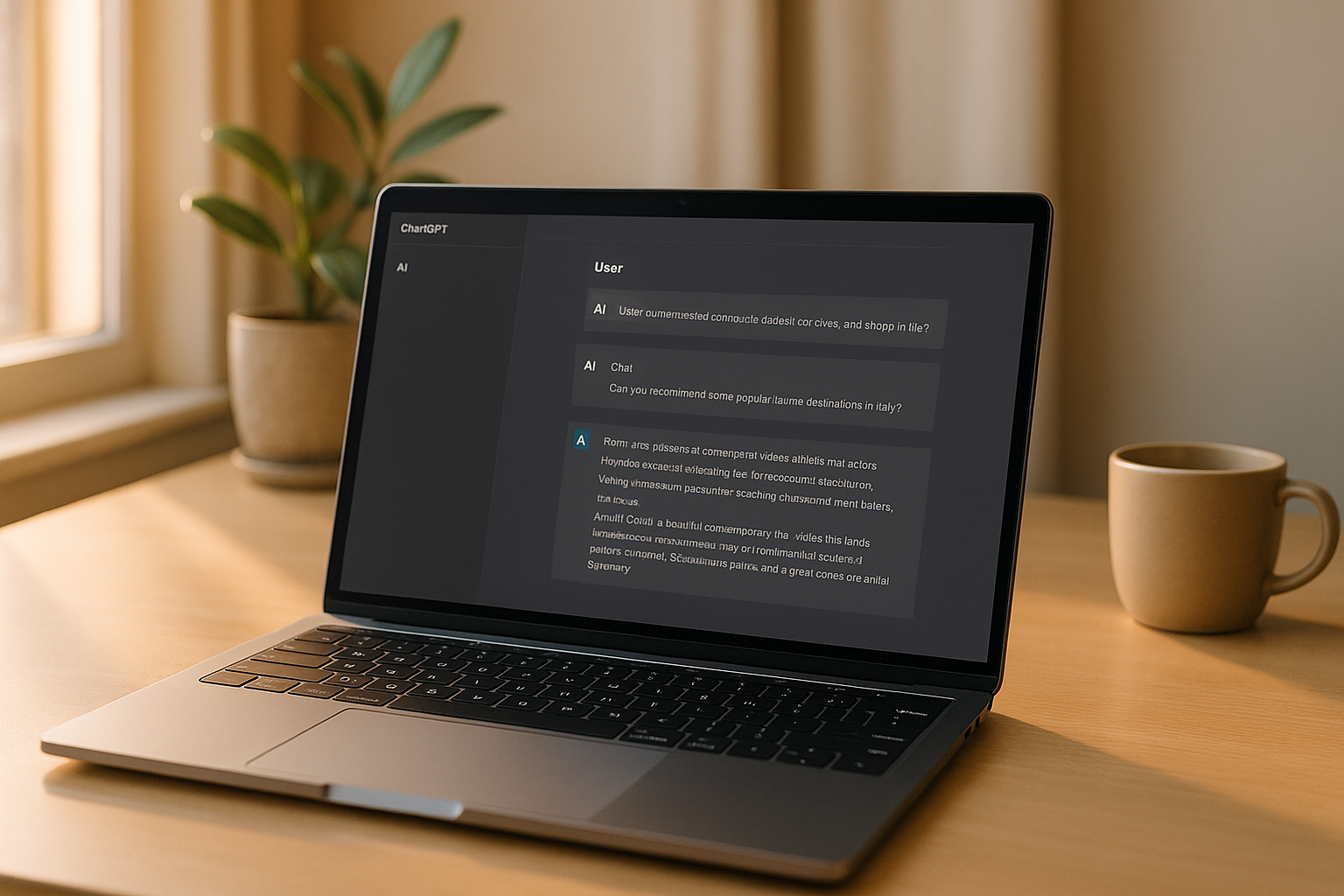Application-level caching improves your app’s speed and efficiency by storing frequently accessed data or precomputed results in memory. This reduces database queries and computational load, making it easier to handle traffic spikes and improve user experience. Tools like Redis and Memcached are popular choices, each suited for different use cases.
Key Takeaways:
- Data Caching: Store frequently accessed info like user profiles or API responses to reduce database load.
- Computation Caching: Save results of heavy computations (e.g., analytics reports) to avoid repeated processing.
- Distributed Caching: Use multiple servers for shared caching in high-traffic, multi-server setups.
Cache Invalidation Methods:
- Cache-aside (Lazy Loading): Fetch and store data in the cache on demand.
- TTL (Time-to-Live): Automatically remove stale data after a set time.
- Versioned Keys: Ensure data freshness by generating new cache keys when data changes.
Popular Tools:
- Redis: Advanced features like data persistence, clustering, and support for complex data structures.
- Memcached: Simple, fast key-value storage for lightweight tasks.
- In-memory caches: Best for small-scale use but limited to single-server setups.
Optimization Tips:
- Monitor metrics like cache hit ratio (aim for 80%+), eviction rate, and response times.
- Use compression (e.g., Protobuf) to save memory.
- Adjust TTL settings based on data volatility and performance needs.
Caching, when implemented carefully, can cut database load by up to 80% and improve response times by 2x–10x. Tools like Redis and Memcached, paired with thoughtful invalidation strategies, ensure your app remains fast and scalable.
What are the best practices for caching? | API Design Interview Questions
Main Types of Application-Level Caches
Application-level caching serves various purposes, such as reducing database queries, storing precomputed results, or supporting horizontal scaling for better performance.
Data Caching
Data caching involves storing frequently accessed information – like user profiles, product catalogs, or API responses – directly in memory. By doing so, you avoid repeatedly querying the database for the same data, which significantly boosts response times and eases the load on your backend.
The key here is to cache data that’s accessed often but doesn’t change frequently. For instance, a product catalog API might cache category listings for 30 minutes, product details for 5 minutes, and inventory status for just 30 seconds[4]. To further optimize, you can use seeding strategies – preloading data for active users at startup while loading less active users’ data on demand. This ensures a balance between performance and memory efficiency.
But what if your application relies on resource-heavy computations? That’s where computation caching steps in.
Computation Caching
Computation caching saves the results of expensive operations rather than raw data. It’s especially useful for scenarios involving resource-intensive calculations, data aggregations, or complex rendering tasks. Instead of recalculating the same results repeatedly, cached computations allow your app to serve requests instantly.
Take a financial analytics platform, for example. Generating reports by aggregating millions of transactions is computationally expensive. Without caching, every report request would trigger the same heavy operation. By caching these reports (say, for 10 minutes), the system can handle repeated requests instantly, reducing CPU usage and improving user experience[6].
This type of caching is also ideal for machine learning workflows. For example, predictions from models can be cached and reused for identical input data. Other use cases include analytics dashboards, risk scoring systems, and report generation – especially when dealing with complex algorithms or large datasets.
The success of computation caching depends on two factors: how often the same computations are requested and how frequently the underlying data changes. It’s most effective for operations that are computationally expensive but produce results that remain valid for a reasonable period.
For applications that operate across multiple servers, distributed caching offers another layer of efficiency.
Distributed Caching
Distributed caching takes caching to the next level by spreading it across multiple servers. This setup ensures consistent and synchronized data access, even as your application scales horizontally. Instead of each server maintaining its own isolated cache, a distributed caching system creates a shared network of cache servers.
This approach is crucial for handling high traffic or multi-server environments. It ensures that all servers can access and update the same cached data while maintaining high availability. Tools like Redis Cluster and Memcached clusters are popular for distributed caching, offering features like data partitioning, replication, and automatic failover. Techniques like consistent hashing ensure that cached data remains accessible even if some servers go offline.
However, keeping data consistent across nodes and managing invalidation can be challenging. Solutions like event-based invalidation with Redis Pub/Sub or versioned cache keys help address these issues, ensuring stale data is promptly updated or removed.
| Cache Type | Best Use Cases | Primary Benefits | Common Tools |
|---|---|---|---|
| Data Caching | User profiles, product catalogs, API responses | Reduces database queries, improves response times | Redis, Memcached |
| Computation Caching | Analytics reports, ML predictions, complex calculations | Saves CPU resources, eliminates repeated processing | Redis, in-app memory |
| Distributed Caching | Multi-server deployments, high-traffic applications | Supports horizontal scaling, maintains consistency | Redis Cluster, Hazelcast |
Selecting the right caching strategy depends on your application’s specific usage patterns and performance bottlenecks. Data caching works well for frequently accessed, rarely updated information. Computation caching is ideal for costly, repeatable operations. And distributed caching is essential for scaling applications across multiple servers or managing heavy traffic loads.
Cache Invalidation Best Practices
Effective cache invalidation is essential to ensure users always access up-to-date information. It works by removing outdated cache entries, which helps maintain data accuracy and avoid potential issues. For instance, in e-commerce, failing to update cached product prices after a change could lead to customers seeing – and buying – items at incorrect prices[2][3].
The choice of invalidation strategy depends on your application’s data behavior and performance needs. Three widely used methods – cache-aside loading, TTL-based expiration, and versioned cache keys – address different scenarios. These strategies can also be combined for more efficient cache management.
Cache-aside (Lazy Loading)
The cache-aside pattern, also called lazy loading, loads data into the cache only when it’s requested. If the cache doesn’t have the data (a cache miss), the application fetches it from the database, stores it in the cache, and returns the result[2][3]. For example, when a user profile is requested, the system first checks the cache. If the profile isn’t there, the database is queried, the result is cached, and the response is sent back. Future requests for the same profile are served directly from the cache until the data is invalidated or evicted.
This method is memory-efficient since only requested data is cached. However, it can lead to higher latency on the first request and requires explicit invalidation logic. A common issue in high-traffic systems is multiple requests simultaneously missing the cache for the same key, causing redundant database queries. To avoid this, techniques like distributed locks or atomic operations can be used to manage cache updates and prevent stale data from being re-cached[2][8][9].
TTL and Expiration Policies
TTL (Time-to-Live) and expiration policies automatically refresh or remove cached data after a set time, reducing the risk of serving outdated information. For example, setting a 10-minute TTL for product inventory data ensures regular updates, keeping stock levels accurate[7][8].
The ideal TTL depends on factors like data volatility, acceptable staleness, system performance, and the cost of cache misses. Dynamic data, like real-time pricing, benefits from shorter TTLs, while static content, such as country codes, can have longer TTLs[7][8][9]. Layered caching architectures can also implement TTL hierarchies. For instance, browsers and CDNs may use shorter TTLs, while database-level caches use longer ones, balancing freshness and efficiency across the system[4].
Monitoring cache hit/miss ratios and user feedback helps refine TTL settings. Systems with well-tuned TTLs often achieve cache hit rates above 80%, indicating effective configuration[4][5]. When precise data consistency is critical, versioned cache keys can be a more reliable choice.
Versioned Cache Keys
Versioned cache keys include a version identifier – like a timestamp, hash, or incrementing number – within the cache key. This ensures that when data changes, a new key is generated, making old cache entries obsolete. For example, in a content management system, an article might be cached using its last modified timestamp (e.g., "article:456:20251018T0100"). Editing the article updates the timestamp, creating a new cache key. This guarantees users always see the latest version without requiring manual cache purging, while older entries naturally expire.
This approach is particularly useful in distributed systems, where coordinating cache invalidation across multiple nodes can be challenging. Instead of clearing caches across nodes, each node simply starts using the new versioned key, effectively bypassing outdated entries. However, managing versioned keys can be complex, as applications need to track versions and handle memory occupied by old cache entries until they’re evicted.
| Strategy | Best For | Key Benefit | Main Challenge |
|---|---|---|---|
| Cache-aside | Frequently accessed, stable data | Memory efficiency | Simultaneous cache misses |
| TTL Expiration | Predictably changing data | Automatic freshness | Timing configuration |
| Versioned Keys | Critical data consistency | Guaranteed freshness | Key management complexity |
Combining these strategies can lead to more robust caching systems. Layered invalidation approaches often integrate cache-aside loading, TTL expiration, and versioned keys, supported by automated cache purging APIs and monitoring tools to ensure a healthy and high-performing cache infrastructure.
sbb-itb-51b9a02
Choosing the Right Caching Tools
Selecting the right caching tool requires careful consideration of factors like data volatility, system architecture, performance goals, and workload type [6][2]. For example, applications with frequently changing data need tools that excel at invalidation strategies, while high-traffic systems benefit from distributed caching solutions [1].
Popular Tools Comparison
Here’s a closer look at some widely-used caching tools:
Redis is a versatile option, offering advanced data structures, persistence, and clustering capabilities [3][5]. It’s a go-to choice for applications that demand complex, distributed, and real-time caching.
Memcached is known for its simplicity and speed, providing fast key-value caching [3][5][1]. It’s easy to deploy and maintain, but it lacks features like built-in clustering and data persistence, making it more suitable for straightforward caching needs.
In-memory caches integrated into application frameworks provide the fastest access since data stays in the application’s memory space. However, these are limited to single-server setups and lack features like automatic eviction policies or TTL management [5][1]. They work best for small-scale applications or development environments but don’t scale horizontally.
| Feature | Redis | Memcached | In-Memory (App) |
|---|---|---|---|
| Data Structures | Advanced (lists, sets, etc.) | Simple key-value | Simple key-value |
| Persistence | Yes | No | No |
| Replication/Clustering | Yes | Limited | No |
| Scalability | High (distributed) | High (distributed) | Low (single server) |
| Use Case | Complex, distributed, real-time | Simple, fast, ephemeral | Small-scale, dev/test |
| Security Features | Robust (ACLs, TLS) | Basic | App-dependent |
Redis is ideal for applications requiring advanced features and reliability, while Memcached excels in scenarios that demand fast, straightforward caching. In-memory caches are better suited for small-scale or development purposes.
Configuration Best Practices
To get the most out of your caching setup, proper configuration is key. Allocate enough memory, monitor hit ratios (aim for over 80% [4][5]), and set eviction policies like LRU (Least Recently Used) or LFU (Least Frequently Used) based on your data access patterns [8].
When configuring TTL (time-to-live) settings, strike a balance between data freshness and performance. Use longer TTLs for static data like country codes or product categories, and shorter TTLs for dynamic content such as inventory levels or user preferences [7][8]. AWS reports that effective caching can cut database load by up to 80% and improve application response times by up to 10x [3].
Security is another critical consideration. Limit network access to cache servers, enable authentication and encryption (e.g., TLS for Redis), and avoid caching sensitive data unless absolutely necessary [7]. Regular updates and patches are essential to minimize vulnerabilities.
How AlterSquare Uses Caching

AlterSquare applies these caching principles across its projects, tailoring solutions to optimize performance. By integrating modern caching strategies into their engineering-as-a-service approach, they align caching techniques with the unique needs of each product, from MVP development to application modernization.
In GoLang projects, AlterSquare uses libraries like "bigcache" or "groupcache", which offer more advanced TTL management and eviction policies compared to basic tools like sync.Map [8]. For Node.js applications, they rely on "node-cache" with configurations like:
const NodeCache = require("node-cache"); const cache = new NodeCache({ stdTTL: 600, checkperiod: 120 }); These strategies consistently deliver measurable performance improvements for their clients.
AlterSquare’s 90-day MVP program particularly benefits from strategic caching. By considering caching needs early in the development process and continuing through post-launch support, they ensure scalability as startups grow. Leveraging AI and generative AI tools, they also create sophisticated caching architectures while keeping costs manageable.
The success lies in selecting caching tools that align with specific business needs rather than opting for a generic solution. Whether working with non-technical founders or experienced entrepreneurs, AlterSquare demonstrates how thoughtful caching strategies can enhance application performance and support business growth.
Monitoring and Optimizing Cache Performance
Once your cache is properly configured, the next step is keeping a close eye on its performance. Monitoring turns guesswork into actionable insights, allowing you to fine-tune and adapt your caching strategies effectively.
Measuring Cache Performance
The backbone of cache optimization is tracking the right metrics. Focus on key indicators like hit ratio (aim for over 80%), miss ratio, latency, eviction rate, and memory utilization. These metrics can reveal configuration issues and help you adjust to evolving access patterns [3].
In-memory caches like Redis and Memcached are known for their speed, typically delivering sub-millisecond access times – much faster than traditional database queries [5].
Tools such as Redis Monitor, Memcached stats, and cloud dashboards like AWS CloudWatch provide real-time insights into these metrics. Pairing these tools with alerting systems like PagerDuty or Prometheus (together with Grafana) ensures you can respond quickly to any anomalies.
| Metric | What It Measures | Why It Matters |
|---|---|---|
| Cache Hit Ratio | % of requests served from cache | Reflects how effectively the cache is working |
| Cache Miss Ratio | % of requests not found in cache | High values may signal misconfiguration or a small cache size |
| Eviction Rate | Frequency of items removed from cache | High rates can hurt performance |
| Response Time | Time to serve cached vs. uncached data | Highlights performance gains from caching |
| Memory Utilization | Amount of memory used by the cache | Helps in fine-tuning resource allocation |
Memory Management and Eviction
Efficient memory management is critical to ensuring your cache runs smoothly. Striking the right balance between cache size and application demands is key. A cache that’s too small results in frequent evictions, while an oversized cache wastes resources and drives up costs.
One way to make better use of memory is through data compression. Formats like Protobuf or msgpack can reduce the size of cached items, letting you store more data without increasing resource usage.
Eviction policies also play a big role in managing memory effectively. For example:
- Least Recently Used (LRU) works well when recent data is more likely to be accessed again.
- Least Frequently Used (LFU) is ideal for scenarios where some data remains consistently popular.
- Time to Live (TTL) policies ensure data freshness by automatically removing items after a specified duration.
Regularly reviewing and adjusting these settings can prevent performance issues as your cache grows and usage patterns shift.
Ongoing Optimization Strategies
Cache optimization isn’t a one-and-done task – it requires constant adjustment as traffic and usage patterns change. By analyzing usage data, you can identify your most accessed items and allocate cache space more effectively. Adjusting TTL values based on this data ensures that your cache stays aligned with current demands.
Metrics like hit ratios and response times can guide these adjustments. For instance, if hit ratios drop during peak traffic, it might be time to increase cache size or rethink your eviction policies. Similarly, endpoints with slower response times may benefit from more targeted caching strategies.
Some teams take optimization a step further with dynamic configuration, which adjusts cache settings in real time as traffic fluctuates. This might include:
- Increasing cache sizes during peak hours.
- Preloading frequently accessed data (or "hot" data) during low-traffic periods to reduce cache misses.
- Switching eviction policies to better match current usage patterns.
Regularly reviewing your caching setup as part of your DevOps cycle ensures your strategy evolves alongside your business needs.
Take AlterSquare, for example. They incorporate these monitoring and optimization principles into their engineering workflows. Their post-launch support includes ongoing cache performance analysis, helping businesses scale efficiently while keeping infrastructure costs under control. By combining real-time monitoring with adaptive optimization, AlterSquare ensures applications maintain high performance as demand grows.
In short, continuous, data-driven cache optimization is essential for building scalable, high-performing applications. These efforts build on the foundational caching strategies discussed earlier, ensuring your system is always ready to meet the demands of modern workloads.
Conclusion
Application-level caching plays a crucial role in building scalable, high-performance systems. By implementing effective caching strategies, applications can handle demanding traffic loads while keeping infrastructure costs under control.
Key Takeaways
The success of caching lies in selecting the right approach based on how often your data changes and how it’s accessed. Prioritize caching for data that’s frequently requested and changes slowly – this is where you’ll see the biggest performance improvements. However, not all data is suitable for caching. Write-heavy operations like POST requests or highly dynamic content can complicate caching and may not be worth the effort.
Keeping cache data fresh and ensuring accurate invalidation are critical for balancing speed and reliability. Techniques like setting appropriate TTL (time-to-live) policies, using versioned cache keys, and adopting event-driven invalidation methods help maintain up-to-date and accurate data for users.
Tools such as Redis and Memcached have become go-to solutions for caching. These in-memory data stores are capable of reducing database load by as much as 90% in high-traffic scenarios [3] and cutting response times for frequently accessed data by 50–80% [5]. Redis is ideal for managing complex data structures and advanced use cases, while Memcached excels in simple, high-throughput key-value caching.
To maximize caching performance, continuous monitoring and fine-tuning are essential. Track metrics like cache hit ratios (aiming for over 80%), response times, and eviction rates to ensure your caching strategy evolves with your application’s needs. When done right, caching can improve application throughput by 2x to 10x, depending on workload and cache efficiency [4][5].
These practices not only represent industry standards but also provide a roadmap for implementing reliable and efficient caching solutions.
How AlterSquare Can Help
AlterSquare takes these caching principles and builds on them with a structured approach, supporting clients from initial design to post-launch optimization. Their expertise ensures the selection of the ideal caching architecture for your specific needs, leveraging tools like Redis and Memcached alongside a modern tech stack that includes Vue.js, Nuxt.js, GoLang, and Node.js.
"We build it right the first time. Unlike freelancers or offshore factories, every line of code is architected for scale. No costly rewrites when you hit growth milestones – just seamless scaling." – AlterSquare
Caching isn’t treated as an afterthought at AlterSquare. Instead, performance optimization is woven into the foundation of every application. Their post-launch support includes ongoing analysis and adjustments to caching strategies, ensuring applications maintain high performance as they grow.
For startups, AlterSquare’s 90-day MVP program incorporates caching best practices from day one, laying the groundwork for scalable architecture that can handle future growth. For established businesses, their modernization services breathe new life into legacy systems, introducing modern caching techniques that significantly boost performance and enhance user experience.
Whether you’re a founder without technical expertise or a seasoned entrepreneur looking for advanced engineering support, AlterSquare’s engineering-as-a-service model offers the continuity and know-how required to build scalable, high-performing applications.
FAQs
What factors should I consider when choosing between Redis and Memcached for application-level caching?
When deciding between Redis and Memcached, it all comes down to what your application needs. Redis stands out with its advanced capabilities like persistence, versatile data structures (like lists, sets, and sorted sets), and support for pub/sub messaging. These features make it a strong choice for more complex scenarios. On the flip side, Memcached is all about simplicity and speed, excelling at quick, in-memory key-value storage – perfect for straightforward caching tasks.
Not sure which one suits your project best? Seeking expert advice can simplify the decision-making process. AlterSquare specializes in software consulting and product engineering, helping you craft scalable and efficient solutions tailored to your application’s needs.
What are the best practices for keeping cached data fresh and accurate?
Effective cache management is all about ensuring your application delivers data quickly and reliably while keeping it accurate. A critical part of this process is cache invalidation, which helps maintain up-to-date information. Here are some practical approaches to consider:
- Time-based expiration (TTL): Assign a time-to-live for cached data so it automatically expires and refreshes at regular intervals.
- Event-driven invalidation: Adjust or remove cached data whenever there’s a change in the underlying data source.
- Selective invalidation: Instead of clearing the entire cache, focus on invalidating only the parts impacted by updates. This reduces the strain on system performance.
By using these methods, you can maintain a healthy balance between speed and accuracy in your application. For those seeking expert guidance, AlterSquare offers solutions tailored to modernizing applications, including optimizing caching strategies as part of a comprehensive engineering plan.
What are the best ways to monitor and optimize cache performance for maximum efficiency and cost-effectiveness?
To keep your cache running smoothly and efficiently, start by leveraging tools that offer real-time insights into key metrics like hit rates, eviction rates, and memory usage. Popular caching platforms like Redis and Memcached include built-in monitoring features, or you can integrate them with third-party tools for more detailed analysis.
When it comes to optimization, prioritize improving your cache hit ratio. This means ensuring that frequently accessed data is stored in the cache while avoiding cluttering it with items that are rarely used. Use strategies like setting time-to-live (TTL) values to automatically remove stale data and make room for new entries. It’s also a good idea to regularly assess your caching strategy and tweak configurations based on how your application is being used. This helps maintain efficiency while keeping costs under control.









Leave a Reply